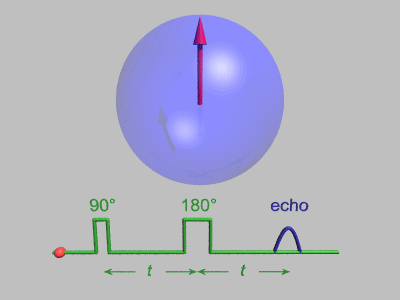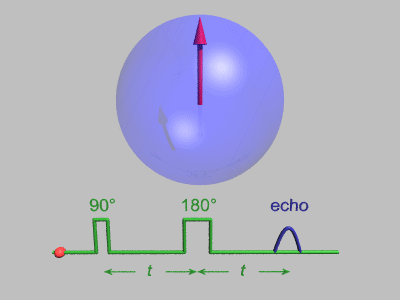Spin echo
But the inhomogeneous dephasing can be removed by applying a 180° inversion pulse that inverts the magnetisation vectors.
[2] Examples of inhomogeneous effects include a magnetic field gradient and a distribution of chemical shifts.
If the inversion pulse is applied after a period t of dephasing, the inhomogeneous evolution will rephase to form an echo at time 2t.
In simple cases, the intensity of the echo relative to the initial signal is given by e–2t/T2 where T2 is the time constant for spin–spin relaxation.
In 1972 F. Mezei introduced spin-echo neutron scattering, a technique that can be used to study magnons and phonons in single crystals.
Hahn's 1950 paper[5] showed that another method for generating spin echoes is to apply three successive 90° pulses.
After the first 90° pulse, the magnetization vector spreads out as described above, forming what can be thought of as a "pancake" in the x-y plane.
Fast spin echo (RARE, FAISE or FSE[10][11][12]), also called turbo spin echo (TSE) is an MRI sequence that results in fast scan times.
As multiple phase-encoding lines are acquired during each TR interval, FSE/TSE techniques may significantly reduce imaging time.


